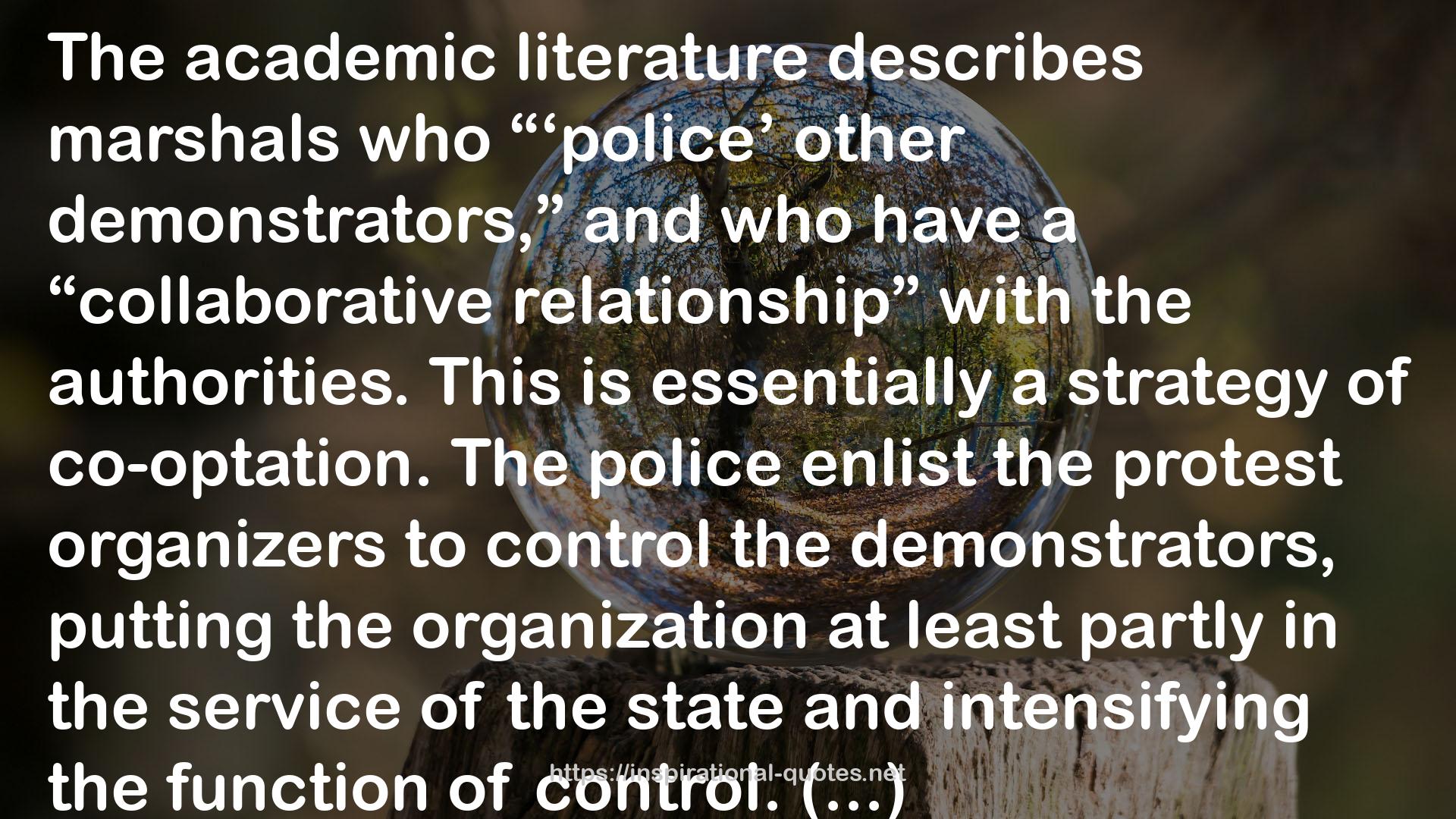" The academic literature describes marshals who “‘police’ other demonstrators,” and who have a “collaborative relationship” with the authorities. This is essentially a strategy of co-optation. The police enlist the protest organizers to control the demonstrators, putting the organization at least partly in the service of the state and intensifying the function of control. (...)
Police/protestor cooperation required a fundamental adjustment in the attitude of the authorities. The Negotiated Management approach demanded the institutionalization of protest. Demonstrations had to be granted some degree of legitimacy so they could be carefully managed rather than simply shoved about. This approach de-emphasized the radical or antagonistic aspects of protest in favor of a routinized and collaborative approach. Naturally such a relationship brought with it some fairly tight constraints as to the kinds of protest activity available. Rallies, marches, polite picketing, symbolic civil disobedience actions, and even legal direct action — such as strikes or boycotts — were likely to be acceptable, within certain limits. Violence, obviously, would not be tolerated. Neither would property destruction. Nor would any of the variety of tactics that had been developed to close businesses, prevent logging, disrupt government meetings, or otherwise interfere with the operation of some part of society. That is to say, picketing may be fine, barricades are not. Rallies were in, riots were out. Taking to the streets — under certain circumstances — may be acceptable; taking over the factories was not. The danger, for activists, is that they might permanently limit themselves to tactics that were predictable, non-disruptive, and ultimately ineffective. "
― Kristian Williams , Our Enemies in Blue: Police and Power in America
